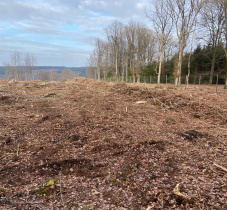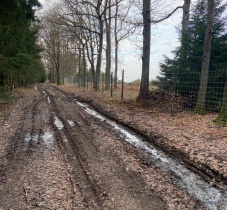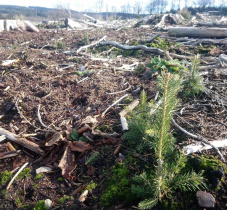Project description
Reforest'Action and its partner Sylva Nova invite you to participate in the reforestation of this forest victim of an insect attack in Belgium !
The project at a glance
- Number of trees to be planted: 15,095
- Plantation area: 10.50 hectares
- Species planted: common spruce, cedar, Douglas fir, hybrid larch, larch, sessile oak
- Project type: reforestation after an insect attack
- Planting season: 2022-2023
The origin of the project
Located in Belgium, in the town of Targnon, this project is implanted in the center of plots of land formerly populated by spruce trees that have undergone a sanitary cut following a disease caused by insects.
The owner wishes to introduce 16,300 trees composed of a panel of 6 diversified species. The diversity of species chosen is intended to make the forest more resilient and better adapted to potential natural and climatic hazards. The trees planted will contribute to the fight against climate change through carbon storage.
Generated benefits
- Fight against climate change: trees provide fruit, fodder, wood, resins, tannins etc. Once planted, they regulate temperatures through the shade of their foliage. Carbon sinks, they store CO₂ and are valuable allies in the fight against global warming. They restore soil fertility and prevent soil erosion.
- Development of biodiversity: agroforestry promotes biodiversity and provides multiple habitats and species. Micro-organisms, fauna, and flora participate in the restoration of an ecological network. They provide refuges for birds that regulate pest populations on crops.
- Protection of territories: the planting of trees in agroforestry helps to protect the land from extreme weather events. By creating shaded areas, the trees preserve the crops during the dry season and provide them with a protective cover during the rainy season.
- Soil enrichment: the leaves fallen from the trees will allow the creation of organic matter that will enrich the soils and contribute to the proper functioning of the forest ecosystem.
- Wood supply: eventually, some mature trees may be harvested to supply the timber industry, economic lung that needs to operate a sustainable energy transition.
- Soil nutrition: trees retain rainwater on the soil surface and filter it before it enters the water table. Thus, forest canopies regulate the water cycle and help preserve the planet's water resources.




